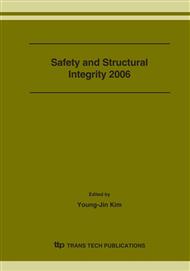p.193
p.199
p.207
p.213
p.223
p.229
p.235
p.241
p.247
Advanced Active Safety System Using Separated Front and Rear Motor Control for a 4WD Hybrid Electric Vehicle
Abstract:
Vehicle stability in 4 wheel drive(4WD) vehicles has been pursued by torque split based technology and brake based technology. The brake based methods are essentially brake maneuver strategies using the active control of the individual wheel brake. By comparison, the torque split based technologies realize stability by varying the traction torque split through powertrain to create an offset yaw moment. In the 4WD hybrid electric vehicle adopting separate front and rear motor, the vehicle stability enhancement algorithm using the rear motor control has some advantages such as faster response, braking energy recuperation, etc. However, since the left and right wheels are controlled by the same driving and regenerative torque from one motor, stability enhancement only by the front and rear motor control has a limitation in satisfying the required offset yaw moment. Therefore, to obtain the demanded offset yaw moment, a brake force distribution at each wheel is required. In this paper, a vehicle stability control logic using the front and rear motor and electrohydraulic brake(EHB) is proposed for a 4WD hybrid electric vehicle. A fuzzy control algorithm is suggested to compensate the error of the sideslip angle and the yaw rate by generating the direct yaw moment. Performance of the vehicle stability control algorithm is evaluated using ADAMS and MATLAB Simulink co-simulation.
Info:
Periodical:
Pages:
223-228
Citation:
Online since:
February 2007
Authors:
Price:
Сopyright:
© 2007 Trans Tech Publications Ltd. All Rights Reserved
Share:
Citation:


